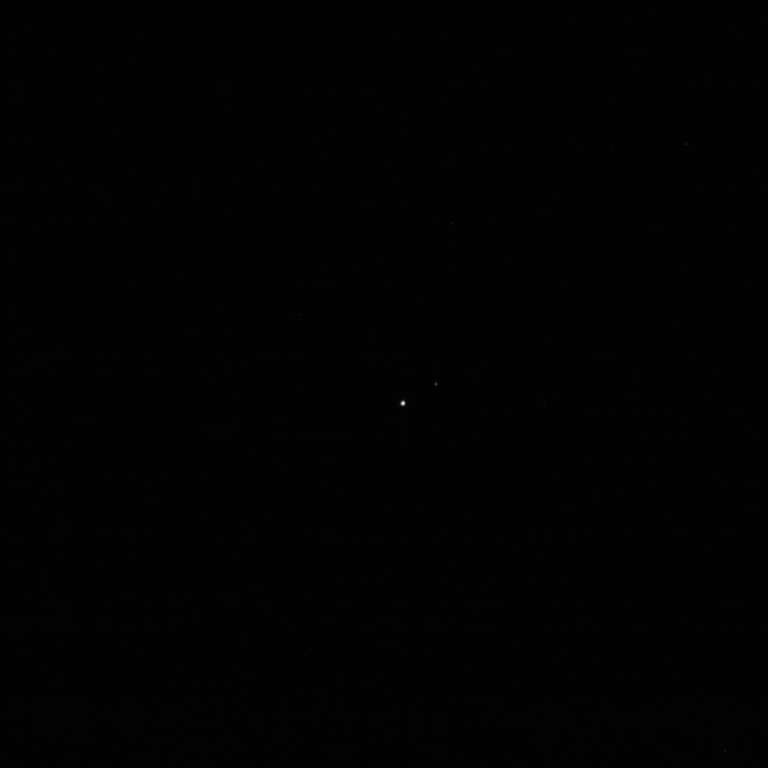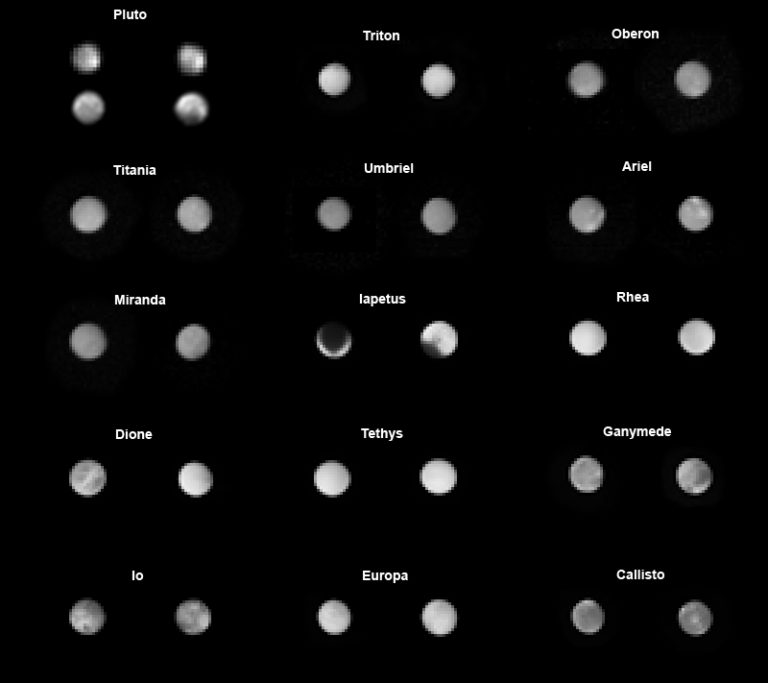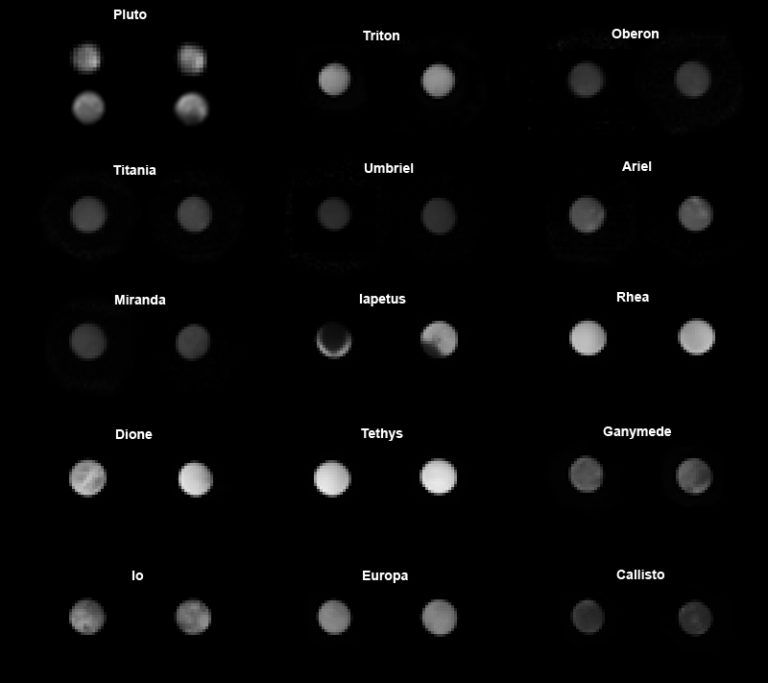Emily Lakdawalla • Jun 01, 2015
A (very) few more details on Pluto
Last week the New Horizons mission released a few new processed versions of their latest and greatest images of Pluto. They're the best images of Pluto that Earth has ever seen, but they're still a long way from what New Horizons will be able to show us, six weeks from now.

A lot of people are commenting that Pluto does not look round in these photos. You're right, it doesn't look round, but that's just an artifact of the way the camera works and the way the images have been enlarged and processed. The processing tends to turn anything that is especially bright into something that looks like a mountain, and anything that is especially dark into something that looks like a hole. In fact, since Pluto is quite large enough for the force of its self-gravity to overcome the strength of its icy material, there is no question that it will be very much round, more round than Ceres. (Pluto has the same density as Ceres, so has similar ice/rock composition, but Pluto has more than 14 times Ceres' mass, so its gravity is significantly stronger.) Roundness is one of the very few things that we can confidently predict about Pluto before New Horizons' flyby, because basic physics does a remarkably good job of predicting bulk physical properties of space objects. To give you a sense of what the photos looked like before manipulation, here's a raw image taken from the New Horizons website.

There is not much more that observers can say about New Horizons' latest pictures except that it is awesome to be receiving them. Björn Jónsson assembled this helpful comparison of what a variety of similar-sized solar system objects look like at very low resolution. There's not much you can say about any of these other worlds at such a scale, either, except that some of them have intriguing features.

About this montage, Björn wrote:
I decided to assemble a quick montage comparing the best released New Horizons Pluto images so far to several outer planet satellites at low resolution. For the satellites I used Voyager images, except at Saturn, where I used Cassini images. I used two images of each body. In the best New Horizons images so far Pluto is roughly 8 pixels across following stacking and extensive processing (in the original images it is 4-6 pixels). I decided to make the satellites bigger, about 12 pixels across, mainly because soon we'll be seeing better New Horizons images than the ones released last month. In all of these images, where possible, the phase angle is comparable to the phase angle in the New Horizons images. I made no attempts to correct the image orientation (i.e. make north up).
Pluto is known to be a high-contrast body. It is obvious from this (with lots of caveats since I don't know the details of the Pluto image processing) that the contrast is rather big but not nearly as big as on Iapetus. The best satellite analogs in terms of contrast seem to be Dione, Ganymede, Io, and maybe Ariel. Triton exhibits far less contrast than Pluto. It's interesting to note that Ganymede has polar caps that are brighter than the equatorial regions.
After I saw this montage, I asked Björn if he could produce one showing the objects at their correct relative albedos. I knew that Umbriel was dark, and Tethys was bright, and Pluto was contrasty, but it's interesting to see just how varied these little globes' surfaces are.

Still just a tease of what's to come! Fewer than six weeks remain until all this guessing is over and we can see Pluto's face for real.
Support our core enterprises
Your support powers our mission to explore worlds, find life, and defend Earth. You make all the difference when you make a gift. Give today!
Donate

 Explore Worlds
Explore Worlds Find Life
Find Life Defend Earth
Defend Earth

